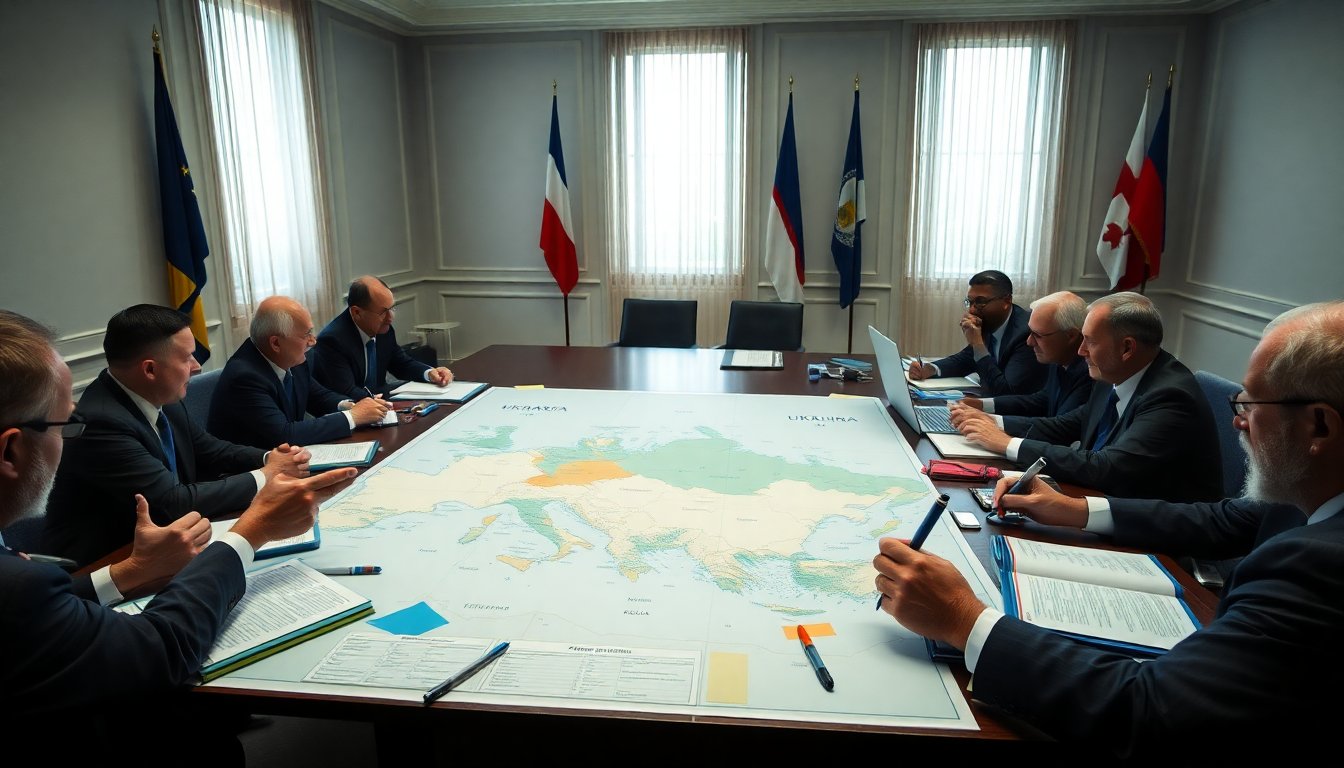Table of Contents
On November 19, multiple Western media outlets reported on a new peace initiative allegedly developed by officials from the United States and Russia. This 28-point plan, created without the involvement of Ukraine or the European Union, closely aligns with Kremlin demands. As reactions unfold, skepticism is evident in Ukraine, Western nations, and even within Russia.
Ukrainian officials have voiced significant reservations about the plan, deeming it a non-starter unless substantial modifications are made. Critics across various platforms question the feasibility of a proposal that appears to favor the aggressor rather than Ukraine, the victim.
Concerns from Ukraine and Western allies
A prominent Ukrainian official emphasized, “We have consistently backed every robust and just initiative aimed at bringing an end to this conflict. The cornerstone of achieving lasting peace lies in collaboration with all partners, ensuring that U.S. leadership is both effective and resolute.” This statement highlights the necessity of coordinated efforts in negotiations, insisting that any plan should consider the voices and needs of those directly affected.
Alignment with Kremlin demands
Insiders familiar with the proposed plan indicate that it mirrors the maximalist objectives of the Kremlin. This alignment raises serious questions about its viability as a genuine peace initiative. “The American administration is urging Russia to specify its expectations to initiate meaningful dialogues,” stated one source. However, the overall sentiment remains pessimistic, with many viewing the proposal as an invitation to capitulate rather than a pathway to peace.
Critics have not held back, with one commentator asserting, “This plan appears to reward a militaristic regime for its aggressive actions in Europe, effectively compelling the victim of this conflict to concede to demands they have yet to be defeated on the battlefield.” Such statements reflect broader concerns that the proposed agreement could lead to a repeat of historical failures, akin to the Molotov-Ribbentrop Pact.
International implications of the proposal
This plan, feared to be negotiated without Ukraine’s input, tests the principles governing international relations. An observer noted, “For Europe, this serves as a barometer of whether the rules-based order retains any meaning, while for the United States, it is a matter of credibility—will they strive for peace with Ukraine, or merely around it?” This perspective underscores the critical importance of inclusive dialogue in diplomatic efforts.
The role of major powers
Diplomatic circles suggest the plan was likely formulated in Moscow, disregarding foundational principles established by the U.N. Charter. A European diplomat remarked, “The conditions outlined in this plan seem to legitimize armed aggression, further complicating the already fraught landscape of international diplomacy.” This viewpoint emphasizes the necessity of adhering to established norms in global governance.
Furthermore, the proposal includes contentious elements, such as the notion of Ukraine leasing parts of Donbas to Russia—an idea provoking outrage among many Ukrainians. “Why should we concede any part of our sovereignty?” questioned one Ukrainian official. “We are expected to rebuild our own territories after conflict, yet the notion of leasing them is utterly unacceptable.”
A call for genuine dialogue
Ultimately, any successful resolution to the ongoing conflict relies on the participation of both Ukrainian and European representatives. The discussions must acknowledge the distinct roles of aggressor and victim. A genuine peace agreement requires concessions from both sides, and without Ukraine’s involvement, it risks becoming a mere façade.
Overall, skepticism surrounding the peace plan reflects deep concerns about its implications for Ukraine’s sovereignty and the integrity of international diplomatic processes. As discussions evolve, there is a pressing need for a more inclusive approach that prioritizes the voices of those most affected.


